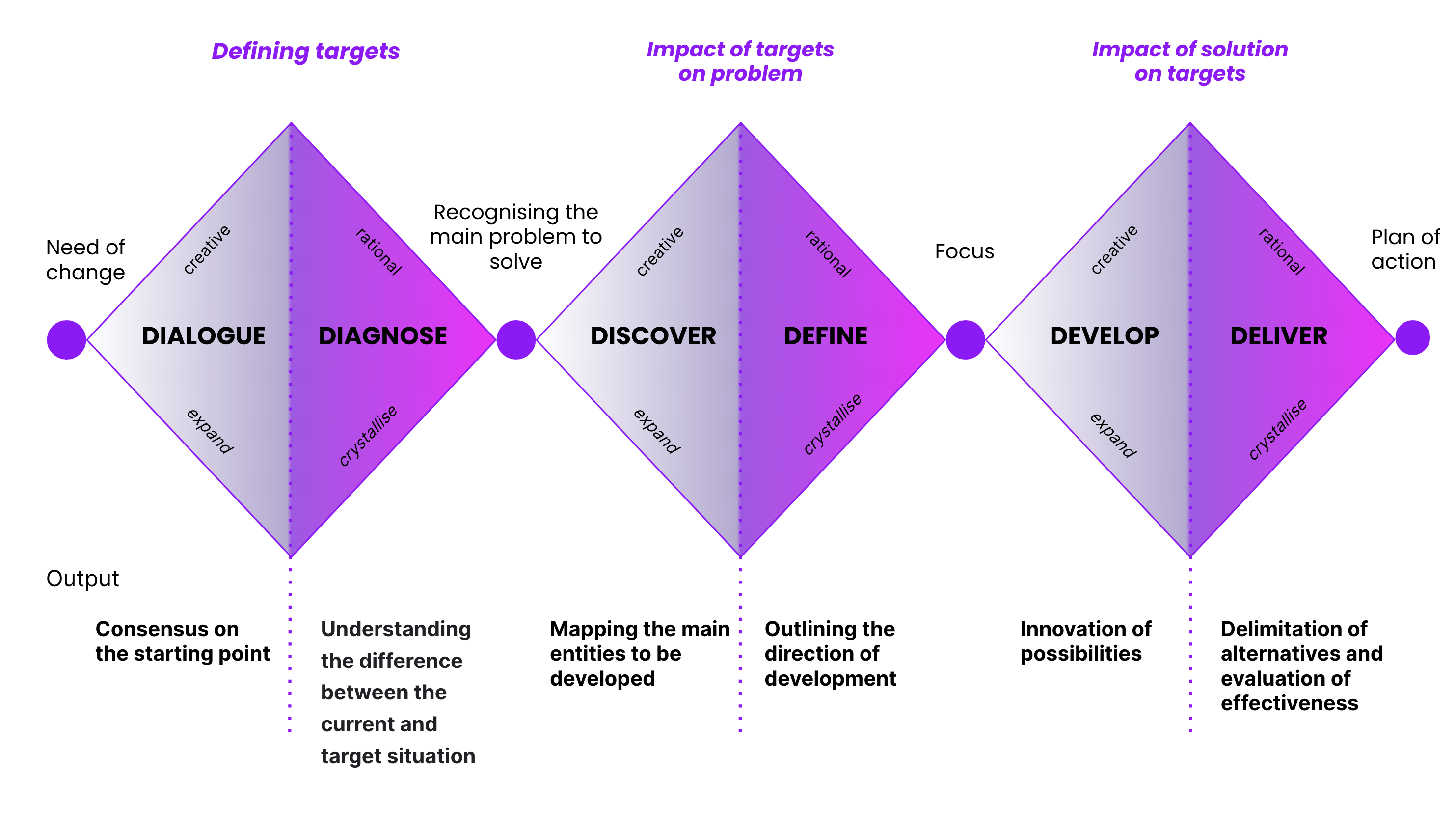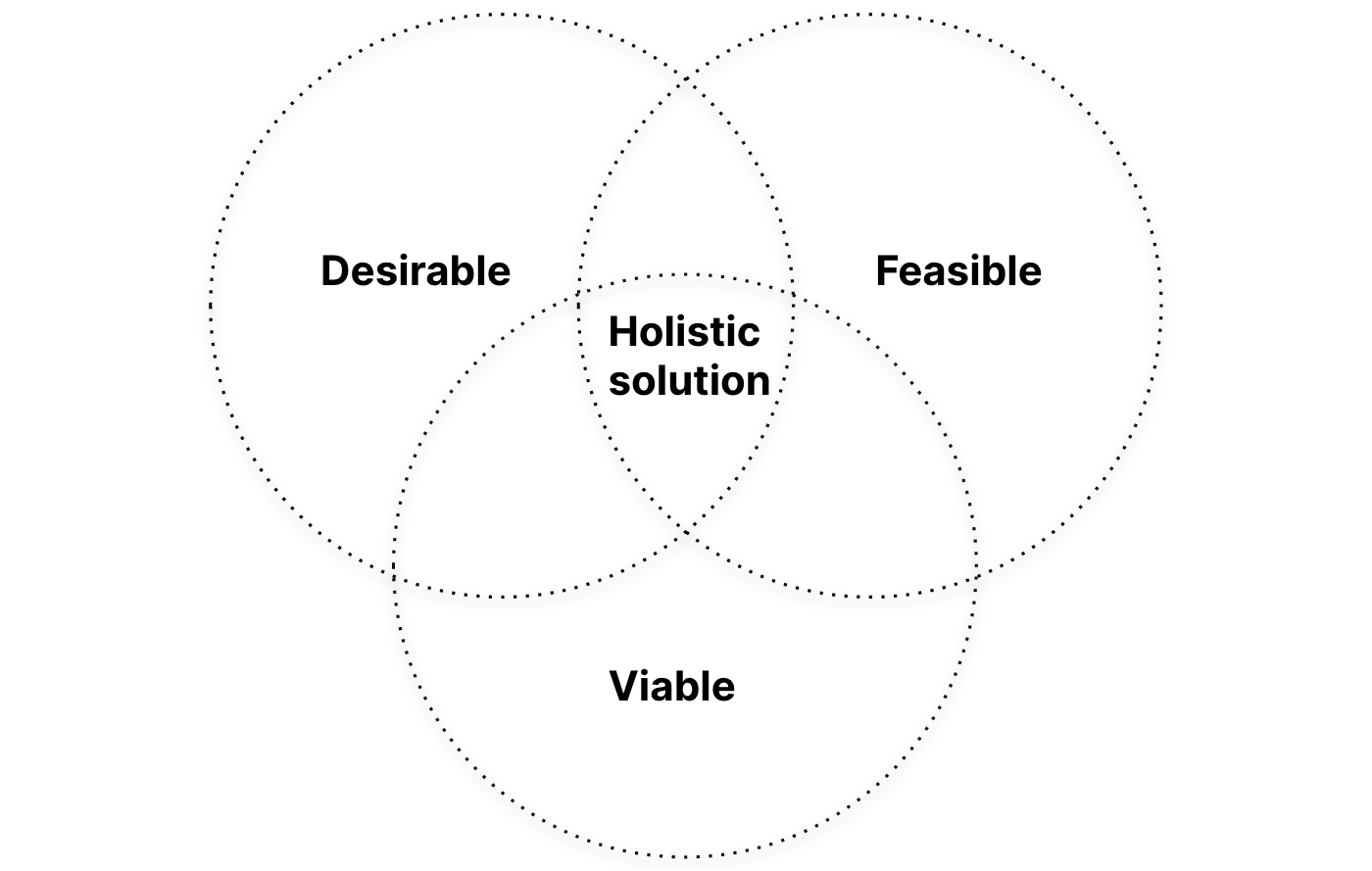
Date
30 April 2025
Category
Design, Digital businessThe design of business
Business design has been an emerging topic in recent years, and its definition is still evolving. Here is my best attempt at explaining what business design is and why it’s important to incorporate it into the development of your digital services.

This article was written by:
Katariina Helin, Business designer
The birth of business design dates back to when management consulting companies started to acquire design companies – for instance when Accenture acquired Fjord, BCG Digital Ventures acquired Strategic & Creative and McKinsey & Company acquired Carbon12, Lunar and Veryday.
The result was a new, systematic approach to applying human-centric methodologies to innovation and the optimisation of the business-related elements of services and products. Through business design, we ensure that the digital services we build are fulfilling our customers’ business requirements and the users’ needs.
The process
Business design is above all a way of operating. It begins with understanding the starting point and targets for development – and the gap between them. As the direction of the future is increasingly uncertain, it makes sense to spend some time on understanding the underlying issues. Where are we really at? What is our goal and why? What does “success” look like?
Business insights are then enriched with customer understanding. By gathering insight, we are able to prioritise the most critical entities for development and outline its direction. That gives us a foundation to innovate and prototype new possibilities. Together with stakeholders and customers, we will then evaluate the alternatives and their effectiveness to form a plan of action.

In business design, we start by determining which entities need development the most according to the strategy, after which we outline scenarios and find a viable solution.
Collaboration
Business design ensures that a strategic perspective is maintained throughout the process, and that an innovative entity is also a commercially sound investment. To understand all of the aspects, business designers typically work closely with other specialists.
At Qvik, business designers work with UI/UX and service designers, developers and payment consultants. By collaborating, we ensure that the services we develop are created holistically to cater to different needs and deliver real business impact.

Business design brings the viability aspect into business development.
In short, business design is a process that combines a strategic business approach with the collaborative methods and mindsets of design to deliver a customer-centric and viable business solution.
Three ways in which business design can help your business
With business design you can save time and money by ensuring that you are working with the right ideas, at the right time and with the right approach before any changes are made or a line of code is written.
- Understand your current position and future opportunities from the perspectives of the market and the competition. Set goals that benefit the business.
- Innovate and test the viability of new ideas cost-effectively.
- Get a better understanding of why a venture should or should not be carried out: How is it connected to the core business and strategy, and how will it deliver measurable value for the organisation?

Key elements of business design.
Examples of useful exercises in business design
1. Ecosystem mapping
- Defining business goals and establishing problem statements.
- Identifying the pain points and metrics that define both the current business landscape and future opportunities.
- Understanding how different business models behave for certain target segments, what revenue and costs they will generate, and how they could affect operations and delivery.
2. New product/service development and prototyping
- Turning key customer insights into different business strategies and results.
- Providing feedback on a solution from a business viability perspective.
- Ensuring that a design solution satisfies the needs of customers and the business.
3. Roadmapping & performance metric implementation
- Defining top strategic priorities, breaking down execution into actionable components, and implementing performance measurement against the desired goals.
- Ultimately, driving projects towards positive user and business outcomes.
Written by Qvik’s business designer Katariina Helin – a strategic thinker, who is interested in people and phenomena, the why and the how.